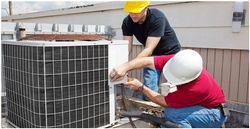Lowering GWP with A2L refrigerants
Climalife UK
The lead for new equipmen t has to come from the manufacturer and compressor builder as they need to be sure their products are both safe and functional for the purpose of use. To get to much lower GWP there will be a need for A2L classified refrigerants and a range of such products are undergoing thorough testing by equipment manufacturers.
t has to come from the manufacturer and compressor builder as they need to be sure their products are both safe and functional for the purpose of use. To get to much lower GWP there will be a need for A2L classified refrigerants and a range of such products are undergoing thorough testing by equipment manufacturers.
A2L refrigerants are already on the market and although classified as mildly flammable they have much lower flammability limits and a much lower burning velocity when compared to Hydrocarbons which are classified as A3.
Already we are seeing the emergence of R-32 for small air conditioning units and further equipment launches on a regular basis. R-32 (GWP 675) is very similar in properties to R-410A (GWP 2088) although it cannot be used in existing R-410A equipment as there are design changes required.
R-1234yf is already in extensive use in car AC with all new cars on the European market now required to use a refrigerant with a GWP less than 150.
R-1234ze is already approved for use in a number of chillers and other HT applications. It is classified as non-flammable below 30oC but has an A2L classification as it is flammable when tested for flame propagation at 60oC.
Blends containing R-32, R-1234yf or R-1234ze already have Ashrae classification and are commercially available and now waiting for completion of test and evaluation from equipment manufacturers.
R-454A, R-454C and R-455A are the leading candidates for R-404A type applications with two of them having a GWP below 150. Whilst R-452B and R-454B are being looked at as potential alternatives to R-410A.
The use of these A2L mildly flammable refrigerants will need to follow the requirements laid down in EN378 for charge size which varies depending upon room size, location and access categories defined in the standard.
Handling the mildly flammable refrigerants requires knowledge of their properties, although existing training qualifications cover their use and handling.
The main aim when working with A2L refrigerants and any other flammable refrigerants is that all precautions are taken and rigidly implemented to ensure that the lower flammability limit can never be exceeded and all ignition sources are kept a safe distance away from the refrigerant and any potential leak.
Many of the current tools can be used with A2L refrigerants and a risk assessment should be carried out to identify exactly what is required. Talking to the equipment suppliers should provide guidance but recovery units and leak detectors will need to be approved for use with A2L refrigerants.
Those who are able to move quickly will be a step ahead of the next phase down step at the end of 2020.
R-454A has already been identified by Dawson Rentals as their preferred replacement beyond R-404A for new equipment and they are looking to roll this out as soon as possible in conjunction with their compressor suppliers.
Retrofitting with A2L is not currently recommended by any of the refrigerant or equipment manufacturers and if this was to be considered there would be a need to ensure the system was compliant with EN378 charge size requirements and a risk assessment to ensure it was safe to do so.
